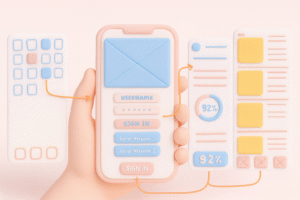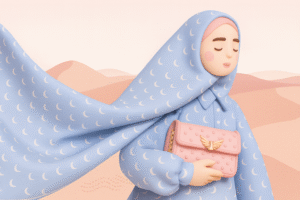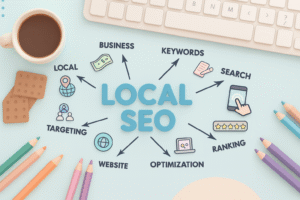The Middle East is entering one of the most transformative periods in its modern economic and cultural history.
Once seen primarily as a consumer of international luxury, the region has now become a creator of it, propelled by a young, digitally fluent population, unprecedented investment, and a growing appetite for brands that blend global relevance with cultural self-confidence.
Across the Gulf, and particularly in the UAE and Saudi Arabia, new brands are emerging with sharper positioning, stronger creative foundations, and a far more strategic approach to identity-building.
As competition intensifies, many founders are partnering early with a Middle East luxury branding agency such as SUM to ensure their brand is built on clarity, coherence, and long-term scalability from day one.
What this signals is a region that is no longer mimicking global luxury but actively reshaping it.
This GrowthFolks analysis explores the forces redefining luxury in the Middle East and offers a strategic blueprint for how future brands can lead the next decade of regional and global influence.
Why the Middle East Is Now the Most Promising Luxury Region in the World
Global industry leaders repeatedly point to the Middle East as the region offering the strongest growth prospects. Several structural and behavioural trends are converging at once, creating conditions unlike any other luxury market:
A fast-growing fashion and luxury market
Regional fashion and luxury sales are growing at approximately 7 percent annually, outpacing many Western markets. The UAE and Saudi Arabia together represent around half of the region’s total fashion spend, with both markets showing sustained year-on-year momentum.
A young, affluent, and globally aware population
More than half of the region’s population is under 30, a demographic that is:
- highly brand literate
- digitally informed
- internationally exposed
- culturally expressive
- financially capable
These consumers expect brands to match global standards while speaking to local identity and nuance.
A shift in social freedoms and cultural behaviour
Structural changes such as:
- rising female workforce participation
- diversified leisure, retail, and hospitality environments
- increased local entertainment spending
- an explosion of social events
are transforming how people dress, shop, and express themselves.
Luxury is no longer reserved for special occasions. It is part of a daily lifestyle.
A return of cultural pride
A striking shift is unfolding: younger generations are embracing national identity more confidently, styling traditional garments in new ways and supporting emerging local designers. This is redefining what luxury means on a cultural and aesthetic level.
The New Middle Eastern Luxury Consumer
Understanding today’s Middle Eastern luxury consumer requires moving beyond conventional stereotypes around wealth or status.
The reality is more sophisticated and far more influential for brand strategy.
They value quality and refinement
Across the UAE and KSA, “high quality,” “elegance,” and “on-trend” consistently rank as the most important brand attributes. Modesty is still considered, but consumers increasingly rely on styling and layering, reducing the need for brands to over-localise silhouettes.
They spend heavily and frequently
Nearly half of consumers spend more than $1,000 annually on fashion, and among high earners in the UAE and Saudi Arabia, $12,000+ per year is common. This is driven not just by purchasing power, but by a highly social lifestyle that requires constant wardrobe variety.
They mix luxury with mass fashion
A defining behavioural pattern in the region is the blending of:
- luxury statement pieces
- accessible high-street basics
- contemporary Arab fashion
- global designer brands
Consumers shop across price points to accommodate a lifestyle filled with social obligations, work events, travel, and family gatherings.
They shop abroad, but this is changing
About 40 percent of fashion spend still occurs outside consumers’ home countries. Yet investment in local retail and tourism is reshoring this spend rapidly. Local stores, malls, and concept destinations are becoming more compelling and experiential, reducing the need to shop internationally.
Aesthetics Are Shifting: From Extravagance to Architectural Restraint
Perhaps the most notable evolution in regional luxury is aesthetic: a marked shift away from ornate maximalism toward a sophisticated, architectural minimalism.
This change is influenced by:
- new urban landscapes
- contemporary design culture
- international fashion literacy
- the rise of local creatives
- global editorial aesthetics
Brands are increasingly adopting:
- clean typographic systems
- refined colour palettes
- elegant modular layouts
- editorial-style photography
- minimal, crafted motifs
This design language reflects a maturing taste profile, one that is both culturally rooted and globally relevant.
Digital Is Now the Flagship Store
Middle Eastern consumers rely heavily on digital channels for discovery, evaluation, and engagement. Social media (especially Instagram, TikTok, and Snapchat) plays a disproportionate role in shaping taste and aspiration, particularly among women and Gen-Z.
Yet e-commerce adoption remains early-stage
Only 10–20 percent of luxury retail is currently digital, largely because of:
- concerns around fit and returns
- the need for Arabic-language content (especially in Saudi Arabia)
- trust issues with online payments
However, digital is expanding fast due to:
- BNPL (“buy now, pay later”)
- seamless mobile wallets
- personalised digital experiences
- influencer-driven discovery
For luxury brands, the digital experience is now a measure of overall brand quality.
Digital expectations are high
Consumers expect:
- flawless UX
- fast delivery
- curated digital storytelling
- mobile-first interfaces
- instant access to new collections
- high-end visual execution
Brands that treat digital as secondary rapidly fall behind.
The Power of VIP Culture and Concierge Retail
The Middle East’s luxury ecosystem is shaped by high-touch, personalised service models that go far beyond typical Western experiences.
These include:
- WhatsApp-based styling
- home try-ons
- personal shopping appointments
- curated lookbooks for high-spending clients
- exclusive previews
- intimate brand dinners, suhoors, and majlis gatherings
For many retailers, 15–20 percent of sales come through concierge-style channels rather than traditional e-commerce.
This level of intimacy creates emotional loyalty, and brands that can replicate it, online and offline, gain a significant advantage.
Why Over-Localisation Is a Risk
While many international brands attempt to localise with region-specific products, there is a growing fatigue with stereotypical “Ramadan-only” or “Arabesque” design approaches.
Consumers increasingly expect:
- cultural nuance
- modern interpretations
- involvement of local creatives
- regionally specific storytelling
- relevance without caricature
Brands that reduce the region to clichés (greens for Ramadan, desert motifs, “oriental” tropes) risk losing credibility quickly.
The winners involve local photographers, designers, stylists, and cultural consultants from the outset, not as a marketing afterthought.
How Local Creatives Are Reshaping Regional Luxury
The region has seen a rise of influential creative voices across photography, styling, fashion design, content creation, and art direction. These individuals have:
- deep cultural understanding
- globally informed taste
- strong influence over Gen-Z and Millennial consumers
- the ability to bridge local identity with global aesthetics
Brands using local creative directors or regional collaborators in campaigns often outperform those relying solely on global assets.
This is especially pronounced in the GCC, where influencers and creatives often feel more culturally resonant and trustworthy than traditional Western luxury imagery.
The Strategic Blueprint for Building a Modern Middle Eastern Luxury Brand
Below is a distilled framework for brands aiming to be competitive in the next decade.
1. Strategy First, Always
Founders increasingly involve strategic partners at inception, defining:
- positioning
- narrative
- naming
- brand architecture
- audience segmentation
- long-term creative direction
Skipping this stage leads to fragmentation and inconsistency later.
2. Build a Culturally Intelligent Narrative
Brands must understand:
- generational differences
- local pride
- emergent fashion behaviours
- the balance between modesty and expression
- shifting gender roles
- the role of family and social events
Narratives that align with these realities feel current, culturally aware, and emotionally resonant.
3. Create a Scalable Identity System
Modern regional brands require:
- robust typographic systems
- flexible layout structures
- digital-first considerations
- motion guidelines
- editorial principles
Identity cannot be a logo alone, it must be a system that scales across retail, digital, social, and content ecosystems.
4. Invest in High-Quality Editorial Content
Luxury brands in the region increasingly behave like publishers. Editorial storytelling is now central to:
- lifestyle positioning
- product elevation
- emotional engagement
- digital differentiation
The aesthetic bar is extremely high, visual inconsistency is fatal.
5. Build Hybrid Physical–Digital Experiences
Offline retail is central to Middle Eastern public life. Brands must integrate:
- immersive in-store experiences
- curated concept retail
- activations tied to cultural calendars
- seamless online–offline continuity
The region’s consumers expect both convenience and theatre.
6. Prioritise VIP Service Models
This is a market where relationships drive disproportionate value. High-end clients expect:
- personalised outreach
- custom styling
- private shopping
- exclusive access
These experiences accelerate loyalty more than traditional marketing.
7. Avoid Generic Localisation
Generic or stereotypical regional adaptations dilute the brand. The strongest brands:
- collaborate with regional creatives
- interpret cultural cues with nuance
- respect heritage while avoiding imitation
Respect and relevance build long-term affinity.
Conclusion: The Middle East Is Redefining Luxury’s Future
The Middle East is no longer a passive luxury consumer, it is becoming a global creative force. With a young population, strong purchasing power, a thriving cultural renaissance, and a digitally fluent customer base, the region represents the most exciting canvas for brand creation today.
Yet competition is increasing fast. Founders who embrace strategy, cultural intelligence, and refined design thinking will shape the next wave of iconic regional brands. Those who underestimate the sophistication of Middle Eastern consumers risk being overshadowed.
In this new era, luxury is not defined by heritage alone, but by clarity, relevance, and cultural resonance. The brands that master these qualities will not only thrive regionally but also influence global luxury for years to come.









